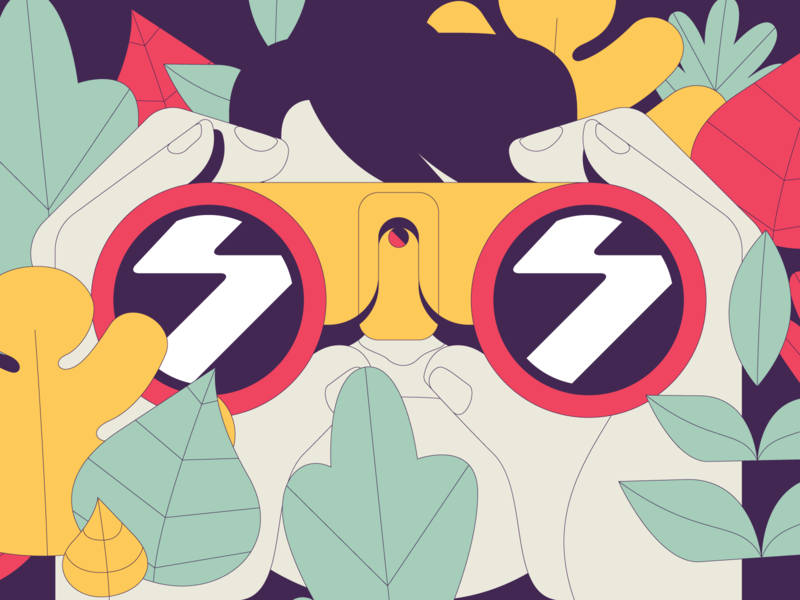This article has been adapted from Senongo Akpem’s new book Cross-Cultural Design where he explores how to design culturally relevant and responsible experiences that reach a truly global audience ■
The internet is connecting more people in more places than ever before—and yet many of us still start our design and illustration projects with wealthy, Western audiences in mind. However, our audiences bring a dazzling variety of languages, perspectives, and expectations with them. If we want to effectively design for these modern, multicultural audiences, we have to be willing to challenge our usual ways of gathering inspiration and conceptualizing our projects.
You may have just started a web or illustration project that requires cultural knowledge or sensitivity. Perhaps your search for “cross-cultural design” brought up a bunch of information, but you want something put into use immediately. You don’t always need to do deep cultural dives, but you can center the needs of your audience by using a few straightforward techniques to help you get started. Let’s take a look at what these are.
Technique 1: Embrace Cultural Immersion
It’s important to surround yourself with the culture you are designing for. For example, start by reading and looking at writing, images, and media from the culture you are researching, both old and new. Look for movies, radio, and TV programs. My neighborhood in Astoria, Queens, has a large Greek population, so if I wanted to understand more about Greek typography and typesetting, buying one the many newspapers at the corner store would be a great first step.
If you live in a larger city, you might try to visit ethnic enclaves and neighborhoods where your target audience lives and works. For instance, if I were building an app for South Asians in America to send money back to their extended families, I might visit Little India in Jackson Heights, Queens to start picking up design cues, such as advertisements for transfer services on shop windows.
This immersion is never a substitute for actual research, but can be a low-cost, immediate method for learning about a culture, especially when budgets, timelines, or current events don’t enable you to travel or conduct ethnographic field work. Remember, you are first and foremost an observer and a consumer, not an expert. Be humble and introspective, and embrace the immersion.
Technique 2: Research Creative Communities
There are digital design communities in every part of the world. Everyone is addressing unique, culturally relevant design problems. By tapping into and working with these networks, we can gain much deeper insight into the design challenges in front of us.
When it comes to UX research, you can look for culture-specific design work on sites like Dribbble. A search for “India art fair,” for example, reveals beautiful work of artists like Ranganath Krishnamani, and from there, you can look at their networks and connections to expose their community. A targeted search on the wider web would reveal even more people relevant to the work you are doing.
See what creative practitioners from your target culture are working on. Do filtered searches on portfolio and design sites to see what other communities are doing. This has the added benefit of giving you a list of potential expert contacts, should you ever need it for a project!
Technique 3: Question Your Assumptions
We ignore our biases and assumptions at a huge risk to our projects. Ignoring how they creep into our work unconsciously is how we get work filled with incorrect ideas, and products that gloss over what our audiences actually need. Instead, you should examine those assumptions about your audiences and why we think that.
In my new book Cross-Cultural Design, I share a methodology for stating and pushing back against your biases. At every stage of your design process, you need to be as clear and as honest as possible about your assumptions—to yourself, to your team, and to your clients or stakeholders:
1. Document your assumptions
Document your assumptions about the client, the audience, and the project— individually and then as a team (if you are part of one!)—in a strategy document. Anytime someone says “We know who/what/when/where/why/how…” at the start of a design project, write that sentence down as an assumption.
2. Share your assumptions
Share your assumptions with all your stakeholders. This part can be uncomfortable. While you may think to yourself, “I know why users do X…”, it can be humbling to state those same biases out loud for others to hear. Explain that you want to check some assumptions with subject matter experts as part of the strategy phase. Be clear about what you need: Do you want confirmation? Discussion? A focus for your research? If you are confident whatever you design will address the assumption, that’s fine—as long as everyone knows that!
3. Create a list of questions
As the Design Director at Constructive, I try to turn those assumptions into a list of questions to guide our team on upcoming projects. For instance, one assumption may be, “We know that users only create a single account on our paywalled site.” Refashioned into a question, that might sound like, “Why do our users create accounts?” Put all the questions up in a Google doc or other accessible place, so everyone has a set of concepts to begin exploring, instead of assumptions to fight against.
Speaking with people who disagree with your hypotheses and questions is also critical. Skeptical voices provide a crucial check on our impulse to go along with a popular viewpoint. Their dissent can tell us more about how a design will be received in a different culture than those who are enthusiastic about it.
Technique 4: Prioritize Flexibility
As you begin to craft design artifacts and components, you want to make sure they are designed with your team members and stakeholders in an open, collaborative way. But what does that really look like? Well, a flexible, shareable artifact will be something that can be iterated on, tested, and discussed. Here are some suggestions for getting there:
- Start by documenting the thinking behind your design choices, whether it’s happening quietly at your desk or in the field! Communicate your intent with members of your team, by describing what you are creating and why. There’s an added benefit. You can use this documentation in case studies and marketing as you build a client base that appreciates and seeks out your cross-cultural expertise.
- Next, start rough. You need time to work through cultural blind-spots. Any components we design, from the simplest paper prototypes to complex icon systems, are based on aesthetic rules and biases we’ve learned or absorbed—meaning they are culturally constructed.
For instance, when doing rough sketches as part of a wireframing process, I tend to indicate blocks of text by drawing lines from left to right, in the same direction I read my native language of English. Flexibility means identifying and challenging these (often subconscious) habits. Just as we create UI sketches left-to-right for an English-speaking audience, we should also draw them right-to-left for an Arabic-speaking audience. In addition, it gives your team time to acknowledge their assumptions and keep working on more flexible artifacts.
- Finally, explain if there will be design variants or options. For example, it’s not uncommon for branding systems to have slightly different color palettes for different markets. If this is what you are working on, make sure you explain how people should correctly use color in those cultures, and why.
We create lots of different things. But by keeping the cultural needs of our audiences in mind with a flexible and documented design process, we can help ensure a more culturally responsive final product.
The Takeaway: Always Seek to Understand the Problem
These are just a few ways to get started with cross-cultural design. They won’t give you all the answers, or tell you exactly how to design for a global audience. But I do hope they alleviate some of your concerns about subjective decision-making, causing offense, or managing client expectations that may not match audience reality.
Use them as a place to begin working on culturally adaptable products and experiences. I hope they help contextualize the challenges you are facing, to help you think through how culture and design intersect. Working on the web means, at its core, deciding how information is presented and shared with the world, and we have a huge responsibility to be thoughtful and ethical about those design decisions ■
![]() Senongo Akpem is a designer, illustrator, and the founder of Pixel Fable, a collection of interactive Afrofuturist stories. He is the Design Director at Nava
Senongo Akpem is a designer, illustrator, and the founder of Pixel Fable, a collection of interactive Afrofuturist stories. He is the Design Director at Nava
Find more Process stories on our blog Courtside. Have a suggestion? Contact stories@dribbble.com.















